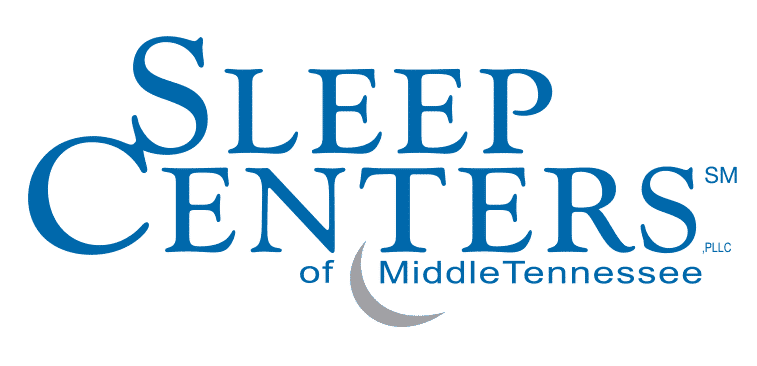Think about Sleep Apnea Testing during the National High Blood Pressure Month of May
May is National High Blood Pressure (HBP) Education Month. September is National Cholesterol Month. Untreated Obstructive Sleep Apnea (OSA) is 2 to 3 times greater risk of a heart attack or stroke than either HBP or elevated cholesterol, yet OSA doesn’t have an awareness month. You would think OSA would have two or even three months since it is so much more dangerous.
HBP is known as the “Silent Killer” because it often goes unnoticed until it has caused havoc on the heart and blood vessels. If HBP is the “Silent Killer,” then OSA is the “Loud Killer.” Loud, because there many patients with OSA that snore. It is formally known as Sleep Disordered Breathing but is commonly called sleep apnea or obstructive sleep apnea (OSA). While 30% of Americans have HBP, 37% have OSA.
The “Loud Killer” is actually a major cause of the “Silent Killer.” OSA is a major cause of HBP, and treatment of OSA often improves HBP. OSA is also a causative factor in diabetes and treatment of OSA improves diabetes and insulin resistance (pre-diabetes). In fact, as many as 86% of patients with type 2 diabetes have OSA.
Related: The Connection Between Sleep Apnea and High Blood Pressure
What is Obstructive Sleep Apnea?
OSA is characterized by recurrent obstructions in the upper airway during sleep. Most of the obstructions are partial where some air is still moving and this often produces a sound of some type, commonly snoring. Sometimes the obstructions are complete, and no air is moving. This is called an apnea and is often described as someone “holding their breath” during sleep. I’ve spent the last 30 years explaining that you don’t have to have apnea to have sleep apnea; you can just have partial obstructions – and, you don’t have to snore, either.
Whether the airway is partially obstructed or completely obstructed, the brain and heart react to the obstruction similar to if someone was choking you and release an adrenaline-like substance, called norepinephrine (NE). This NE arouses the brain momentarily to open the airway. It is these momentary arousals during sleep (that the person has no awareness of) that causes the daytime sleepiness and fatigue of OSA. It is the release of NE that raises blood pressure and leads to insulin resistance (diabetes) and heart disease. In fact, there are several factors involved with how OSA causes heart disease and stroke including decreased oxygen in the blood.
Sleep is supposed to be a peaceful time of renewal of the body, particularly the brain. Recent research has shown that sleep affects the memory of the brain sort of like defragmenting your computer. However, with adrenaline-like stimulants pumping through your brain during sleep, you can see the association of OSA with increased anxiety, depression, and cognitive issues. In fact, severe OSA is sometimes misdiagnosed as early dementia.
Snoring is no longer a laughing matter. It is the sound of someone struggling to breathe in their sleep. It is the sound of as high as a 40% chance of dying in the next 15 years if left untreated, which is more than either high blood pressure or elevated cholesterol.
Can Treatment for OSA Improve Your Health?
A landmark study in Italy investigated patients with severe OSA and found cognitive and memory problems associated with brain damage on brain scans (white-matter degeneration on magnetic resonance imaging). After one year of treatment with Continuous Positive Airway Pressure (CPAP), the brain scans returned to normal and the cognitive and memory issues markedly improved.
A large study in Spain showed that CPAP reduced heart attacks by two-thirds. Treatment of OSA has been shown to improve (and sometimes even resolve) depression, anxiety, cognitive and memory issues, fatigue, daytime sleepiness, GERD, urination at night, and even erectile dysfunction. Treatment of OSA generally makes you feel better each day. Medications for high blood pressure and/or cholesterol generally do not make you feel different, except for the side effects.
In just the last two years, there have been numerous studies showing CPAP reduces hospital admissions and saves healthcare costs. In fact, one study last year involving the whole Australian healthcare system found that spending to diagnose and treat OSA added years to life while, at the same time, saved money. It’s hard to fathom but treating patients with CPAP not only increased their quality of life but kept money in their pockets.
Why is OSA so Under-Diagnosed and Treated?
While almost everyone has their blood pressure and cholesterol checked, few are evaluated for OSA. One study showed that even in patients with heart disease where 50-75% of these patients have OSA, and CPAP may provide the most benefit, less than 4% of these patients were evaluated for OSA.
There are several reasons for this. Until recently, undergoing sleep testing was inconvenient, very expensive, and it took weeks, or even months, to get a CPAP device. CPAP was perceived as a gas mask left over from World War I that would scare your bed partner worse than the breath-holding. There were also issues concerning the medical evidence for CPAP. None of this is true anymore.
Another reason is the lack of OSA awareness among healthcare workers. Treatment of high blood pressure and elevated cholesterol have been around for more than 50 years. The first commercial CPAP devices were released in the late 1980’s, and until recently, there was little to no sleep curriculum in medical training programs.
There are also no pharmaceutical companies behind the scenes pushing OSA awareness. OSA only has a single week of Awareness in March, while high blood pressure and cholesterol each have an awareness month. That will change soon as the first medication to treat OSA will be out in a few years. In the meantime, I say we start now and pick two months. Take all of March and add February. Maybe instead of roses, husbands will address their snoring for Valentine’s Day.
Is it Difficult to Wear a CPAP Mask?
By the way, we don’t call it a mask; it is an interface. The most common types just fit in your nostrils with a small single strap. This past year we pioneered scanning the face with a 3-D camera to find a perfect fit. Last summer, I got to test an interface custom printed on a 3-D printer that had no strap. For the last 15 years, our group has focused its clinical efforts and research on finding ways to get more patients to become long-term CPAP users. In 2017, we partnered with Middle Tennessee State University to form the MTSU Sleep Research Consortium to begin publishing our results. And what have we found? That our program gets nearly twice the national average of patients using CPAP long-term. We have tens of thousands of happy patients wearing CPAP nightly that initially thought they would never be able to do it. This is our focus.
What about the Inconvenience and Cost?
Our new OSAinHomeSM program has made sleep testing and starting CPAP as fast and as easy as checking your cholesterol and beginning a cholesterol medication. Even better, with OSAinHomeSM, you never have to leave the house, which is great during this epidemic.
While spending the night covered in wires in a hospital-owned sleep lab can cost up to thousands of dollars, with OSAinHomeSM you spend the night in your own bed with a watch-like device on your wrist that costs a couple of hundred dollars. Your sleep test is single-use (also great with the epidemic) and uploads to the cloud where we can have your results before breakfast.
You will have a sleep consultation to go over your results, completed over your smartphone or computer. If you need and choose CPAP, the most advanced device is delivered to your door with a modem inside the unit so that we can monitor and change settings from our offices. We have our own specially trained sleep providers, respiratory therapists, and sleep coaches to support and assist you in both the short term and long term. It’s also important to remember that CPAP is less expensive than cholesterol medications and many blood pressure medications (over 5 years).
Where to Get Help?
The future of sleep medicine began in Middle Tennessee where we have offices in Murfreesboro, Franklin, Clarksville, and recently opened in Chattanooga. However, during this epidemic, we have treated patients as far away as Bristol, TN and Memphis, and we just started accepting patients from all across Georgia, Kentucky, and Alabama. Remember, you don’t have to leave the house.
So, during the month of May, check your blood pressure to address the “Silent Killer,” and think about your cholesterol, but think twice or even thrice about being evaluated for OSA, the “Loud Killer.” With OSAinHomeSM it is just as easy, convenient, and inexpensive to treat.
If you’re ready to discover how a sleep specialist can help you, contact Sleep Centers of Middle Tennessee today or call (615) 893-4896. We can get you set up for better sleep.

